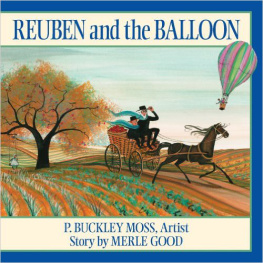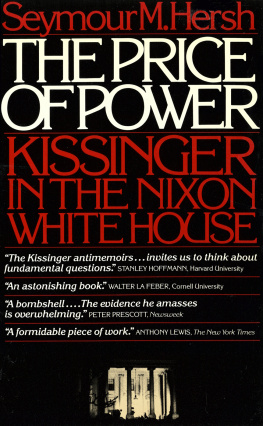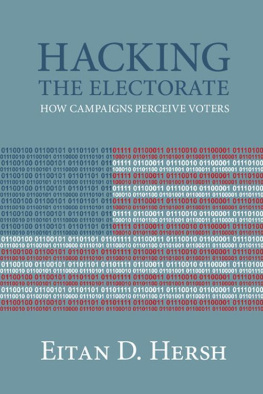Reuben Hersh - What Is Mathematics, Really?
Here you can read online Reuben Hersh - What Is Mathematics, Really? full text of the book (entire story) in english for free. Download pdf and epub, get meaning, cover and reviews about this ebook. year: 1997, publisher: OUP Premium, genre: Religion. Description of the work, (preface) as well as reviews are available. Best literature library LitArk.com created for fans of good reading and offers a wide selection of genres:
Romance novel
Science fiction
Adventure
Detective
Science
History
Home and family
Prose
Art
Politics
Computer
Non-fiction
Religion
Business
Children
Humor
Choose a favorite category and find really read worthwhile books. Enjoy immersion in the world of imagination, feel the emotions of the characters or learn something new for yourself, make an fascinating discovery.

- Book:What Is Mathematics, Really?
- Author:
- Publisher:OUP Premium
- Genre:
- Year:1997
- Rating:5 / 5
- Favourites:Add to favourites
- Your mark:
- 100
- 1
- 2
- 3
- 4
- 5
What Is Mathematics, Really?: summary, description and annotation
We offer to read an annotation, description, summary or preface (depends on what the author of the book "What Is Mathematics, Really?" wrote himself). If you haven't found the necessary information about the book — write in the comments, we will try to find it.
What Is Mathematics, Really? — read online for free the complete book (whole text) full work
Below is the text of the book, divided by pages. System saving the place of the last page read, allows you to conveniently read the book "What Is Mathematics, Really?" online for free, without having to search again every time where you left off. Put a bookmark, and you can go to the page where you finished reading at any time.
Font size:
Interval:
Bookmark:
What Is Mathematics, Really?
What Is Mathematics, Really?
Reuben Hersh


Oxford New York
Athens Auckland Bangkok Bogota Buenos Aires Calcutta Cape Town Chennai Dar es Salaam Delhi Florence Hong Kong Istanbul Karachi Kuala Lumpur Madrid Melbourne Mexico City Mumbai Nairobi Paris So Paolo Singapore Taipei Tokyo Toronto Warsaw
and associated companies in
Berlin Ibadan
Copyright 1997 by Reuben Hersh
First published by Oxford University Press, Inc., 1997
First issued as an Oxford University Press paperback, 1999
Oxford is a registered trademark of Oxford University Press
All rights reserved. No part of this publication may be reproduced,
stored in a retrieval system, or transmitted, in any form or by any means,
electronic, mechanical, photocopying, recording, or otherwise,
without the prior permission of Oxford University Press.
Cataloging-in-Publication Data
Hersh, Reuben, 1927
What is mathematics, really? / by Reuben Hersh.
p. cm. Includes bibliographical references and index.
ISBN 0-19-511368-3 (cloth) / 0-19-513087-1 (pbk.)
1. MathematicsPhilosophy. I. Title.
QA8.4.H47 1997 510.1dc20 96-38483
Illustration on dust jacket and p. vi Arabesque XXIX courtesy of Robert Longhurst. The sculpture depicts a minimal surface named after the German geometer A. Enneper. Longhurst made the sculpture from a photograph taken from a computer-generated movie produced by differential geometer David Hoffman and computer graphics virtuoso Jim Hoffman. Thanks to Nat Friedman for putting me in touch with Longhurst, and to Bob Osserman for mathematical instruction. The Mathematical Notes and Comments has a section with more information about minimal surfaces.
Figures 1 and 2 were derived from Ascher and Brooks, Ethnomathematics, Santa Rosa, CA.: Cole Publishing Co., 1991; and figures 617 from Davis, Hersh, and Marchisotto, The Companion Guide to the Mathematical Experience, Cambridge, Ma.: Birkhauser, 1995.
10 9 8 7 6 5 4
Printed in the United States of America
on acid free paper
to Veronka

Robert Longhurst, Arabesque XXIX
... , So long lives this, and this gives life to thee.
Shakespeare, Sonnet 18
Outline of Part One. The deplorable state of philosophy of mathematics. A parallel between the Kuhn-Popper revolution in philosophy of science and the present situation in philosophy of mathematics. Relevance for mathematics education.
Philosophy of mathematics is introduced by an exercise on the fourth dimension. Then comes a quick survey of modern mathematics, and a presentation of the prevalent philosophyPlatonism. Finally, a radically different viewhumanism.
What should we require of a philosophy of mathematics? Some standard criteria arent essential. Some neglected ones are essential.
Anecdotes from mathematical life show that humanism is true to life.
All are subjects of long controversy. Humanism shows them in a new light.
Is mathematics created or discovered? What is a mathematical object? Object versus process. What is mathematical existence? Does the infinite exist?
From Pythagoras to Descartes, philosophy of mathematics is a mainstay of religion.
From Spinoza to Kant, philosophy of mathematics and religion supply mutual aid.
A crisis in set theory generates searching for an indubitable foundation for mathematics. Three major attempts fail.
Mainstream philosophy is still hooked on foundations.
Humanist philosophy of mathematics has credentials going back to Aristotle.
Modern mathematicians and philosophers have developed modern humanist philosophies of mathematics.
Mathematicians and others are contributing to humanist philosophy of mathematics.
Philosophy and teaching interact. Philosophy and politics. A self-graded report card.
Mathematical issues from chapters 113. A simple account of square circles. A complete minicourse in calculus. Booloss three-page proof of Gdels Incompleteness Theorem.
Forty years ago, as a machinists helper, with no thought that mathematics could become my lifes work, I discovered the classic, What Is Mathematics? by Richard Courant and Herbert Robbins. They never answered their question; or rather, they answered it by showing what mathematics is, not by telling what it is. After devouring the book with wonder and delight, I was still left asking, But what is mathematics, really?
This book offers a radically different, unconventional answer to that question. Repudiating Platonism and formalism, while recognizing the reasons that make them (alternately) seem plausible, I show that from the viewpoint of philosophy mathematics must be understood as a human activity, a social phenomenon, part of human culture, historically evolved, and intelligible only in a social context. I call this viewpoint humanist.
I use humanism to include all philosophies that see mathematics as a human activity, a product, and a characteristic of human culture and society. I use social conceptualism or social-cultural-historic or just social-historic philosophy for my specific views, as explained in this book.
This book is a subversive attack on traditional philosophies of mathematics. Its radicalism applies to philosophy of mathematics, not to mathematics itself. Mathematics comes first, then philosophizing about it, not the other way around. In attacking Platonism and formalism and neo-Fregeanism, Im defending our right to do mathematics as we do. To be frank, this book is written out of love for mathematics and gratitude to its creators.
Of course its obvious common knowledge that mathematics is a human activity carried out in society and developing historically. These simple observations are usually considered irrelevant to the philosophical question, what is mathematics? But without the social historical context, the problems of the philosophy of mathematics are intractable. In that context, they are subject to reasonable description and analysis.
The book has no mathematical or philosophical prerequisites. Formulas and calculations (mostly high-school algebra) are segregated into the final Mathematical Notes and Comments.
Theres a suggestive parallel between philosophy of mathematics today and philosophy of science in the 1930s. Philosophy of science was then dominated by logical empiricists or positivists (Rudolf Carnap the most eminent). Positivists thought they had the proper methodology for all science to obey (see ).
By the 1950s they noticed that scientists didnt obey their methodology. A few iconoclastsKarl Popper, Thomas Kuhn, Imre Lakatos, Paul Feyerabendproposed that philosophy of science look at what scientists actually do. They portrayed a science where change, growth, and controversy are fundamental. Philosophy of science was transformed.
This revolution left philosophy of mathematics unscratched. Its still dominated by its own dogmatism. Neo-Fregeanism is the name Philip Kitcher put on it. Neo-Fregeanism says set theory is the only part of mathematics that deserves philosophical consideration. Its a relic of the Frege-Russell-Brouwer-Hilbert foundationist philosophies that dominated philosophy of mathematics from about 1890 to about 1930. The search for indubitable foundations is forgotten, but its still taken for granted that philosophy of mathematics is aboutfoundations!
Next pageFont size:
Interval:
Bookmark:
Similar books «What Is Mathematics, Really?»
Look at similar books to What Is Mathematics, Really?. We have selected literature similar in name and meaning in the hope of providing readers with more options to find new, interesting, not yet read works.
Discussion, reviews of the book What Is Mathematics, Really? and just readers' own opinions. Leave your comments, write what you think about the work, its meaning or the main characters. Specify what exactly you liked and what you didn't like, and why you think so.











